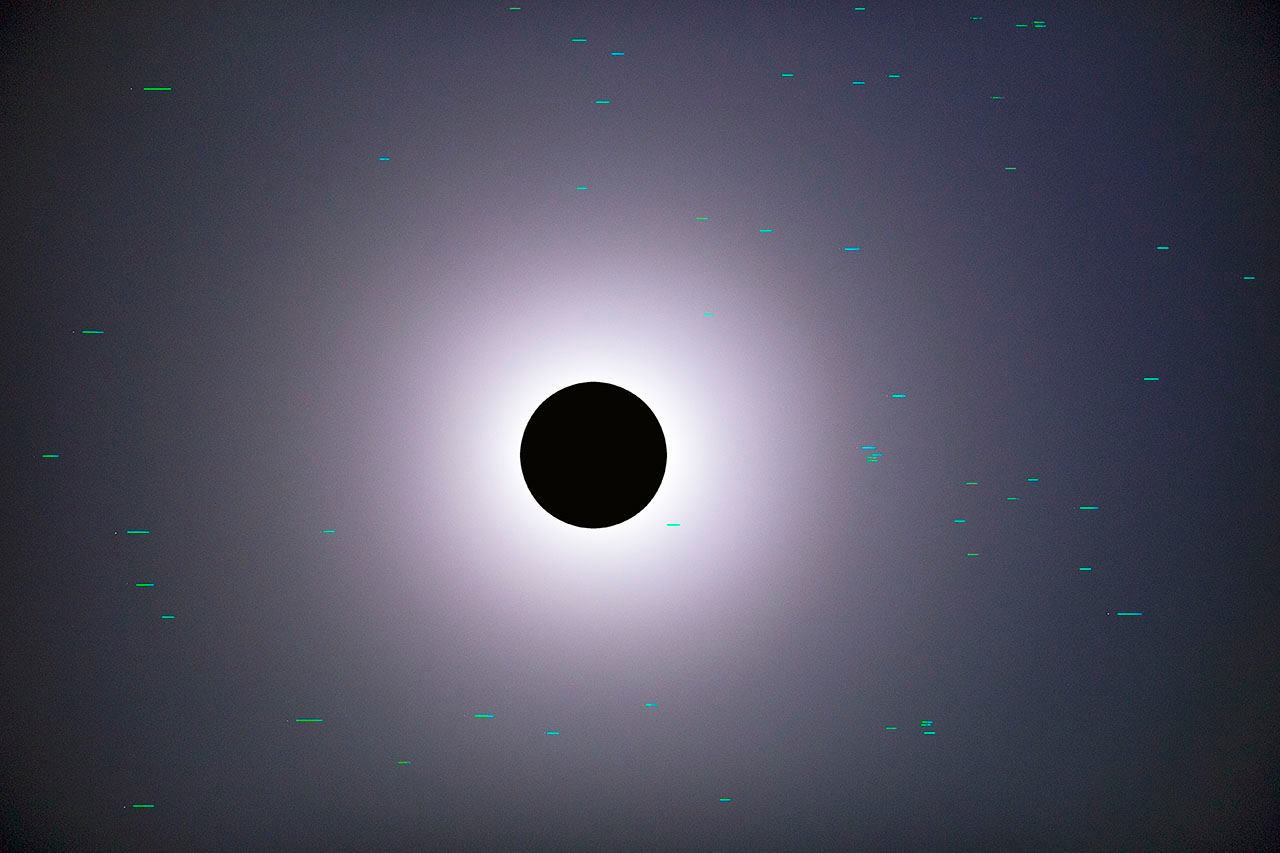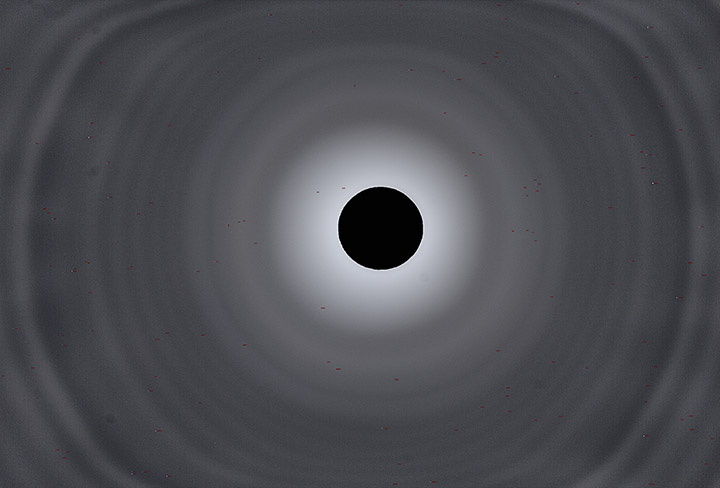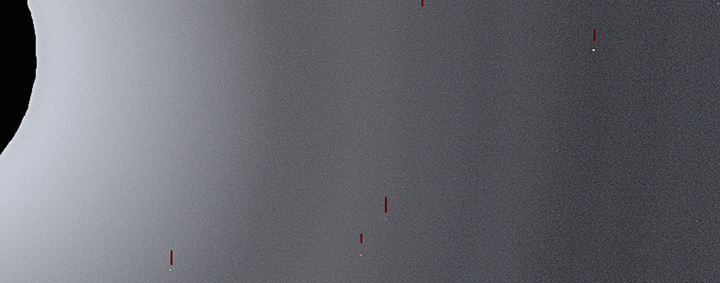Sir Arthur Should Have Had it So Good
11/14/2016. This is only a test. Had this been a real eclipse, you would have been instructed wh... The "Supermoon" and smoke from the wildfire in the South Mountains let me see how well the 6D and TMB92 will detect stars near next summer's eclipsed sun. I marked about 48 in this 1/8-second, ISO 1600 frame (you'll never see the stars in this FB-mangled, web-sized version). I blacked out the Moon just for kicks, to make the test look more like the real thing. This is a single frame. I shot several 10-frame sequences so I can experiment with stacking for better signal to noise. I bet that will help considerably.

I could just make out most of those marked stars by going over the full-res frame in small tiles. Down below is the fully processed version. I never said it would be pretty. And don't bother trying to count stars etc, because you'll need the full-res, full-bit-depth version to do much good with that. Here's what I did: first I stacked all ten 125ms exposures and saved the result twice. One stack I blurred across 20 pixels. That became a dynamic mask for the other image. I calibrated the first stack using the blurred image as a flat. Then I applied PixInsight's dynamic background extraction routine. And finally I applied an unsharp mask in Photoshop. There are improvements possible everywhere. Pixel math, different calibration strategies, iterative deconvolution... lots.

At a guess, I'd say I've got a little more than twice as many usable stars. They're ticked in this one with dark red bars and are nigh onto invisible in this small presenation. Guide 9.1 says I have stars as faint as magnitude 10.5 within 1 - 1.25 degrees of the limb of the full Moon. Here's a before and after crop of a small part of the frame:

A single 1/8 second frame, processed more or less "ordinarily."

A portion of the stack of ten 1/8-second frames processed for all they're worth.
OK, not an exact match for the fields, but close enough to find at least that one star in the upper right in both images. I find this result very encouraging. I wish I could show it to you better. By and by, I'm sure I will as the method improves. I mean, that's an off-the-cuff kind of processing strategy, but I think it would do. And I am sure I can do better.
Why do I think I can casually make the measurements that Arthur Eddington (he wasn't sir then) barely managed at the 1919 eclipse? Well, actually, I don't think I can: he wanted to distinguish Einstein's predicted deflection of starlight from the smaller deflection predicted under Newtonian models of the way the universe works. I just want to see spacetime warp for myself. The exact amount is not all that material to me. Anyway: my sensor is smaller and more dimensionally stable, my telescope is sharper though the image scale is less than ideal, the CCD/CMOS chip is naturally divided up into pixels and so questions of measurement are almost trivial, and algorithms for astrometry borrow from those for guiding and can locate the centroids of star images with exquisite precision. I'd like clear skies in August.
My deep-sky photos are made with a variety of sensors and optics. Deepest images usually come from a SBIG ST2000XM CCD behind a 10-inch Astro-Tech Ritchey-Chretien carried on an Astro-Physics Mach1GTO. The CCD is equipped with a CFW-10 loaded with Baader wide- and narrow-band filters. Camera control and guiding are handled by Maxim DL 5.12. A Canon 6D and a modded 50D find themselves mounted behind an Orion 10" F4 Newtonian or a 92mm Thomas Back refractor or a tiny but mighty AT65EDQ refractor, sometimes with Backyard EOS in control and PHD Guide keeping things on target. Really widefield photos are often made using the 6D and various camera lenses and an iOptron Skytracker mount. PixInsight does most of the heavy lifting in post-processing — alignment, stacking, gradient removal, noise-reduction, transfer function modification, color calibration, and deconvolution. Photoshop along with Focus Magic and a handful of other plugins get their licks in, too, especially when polishing for the web.
:: top ::